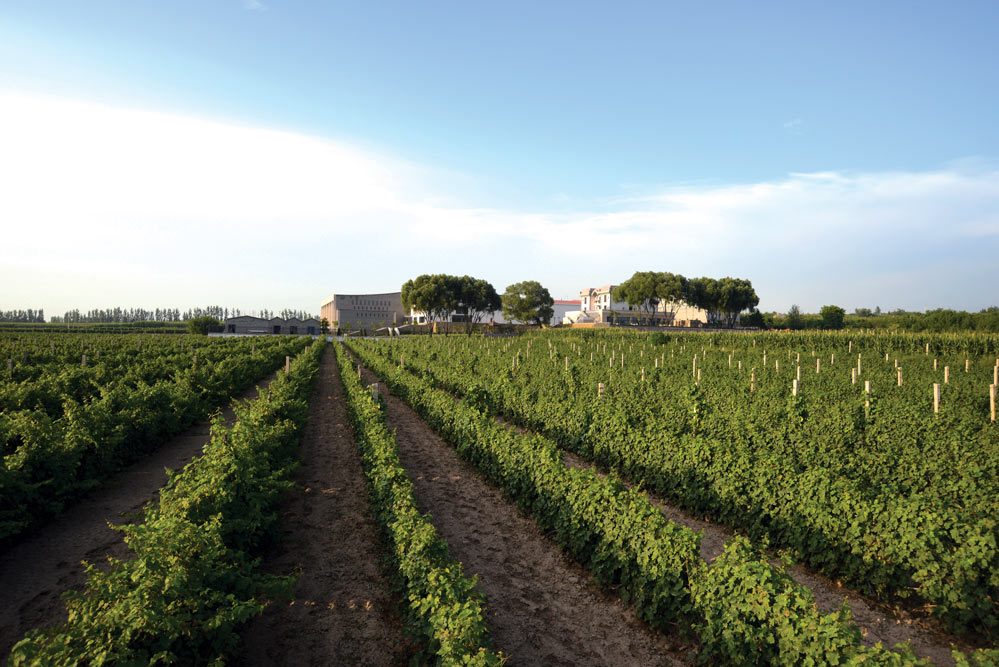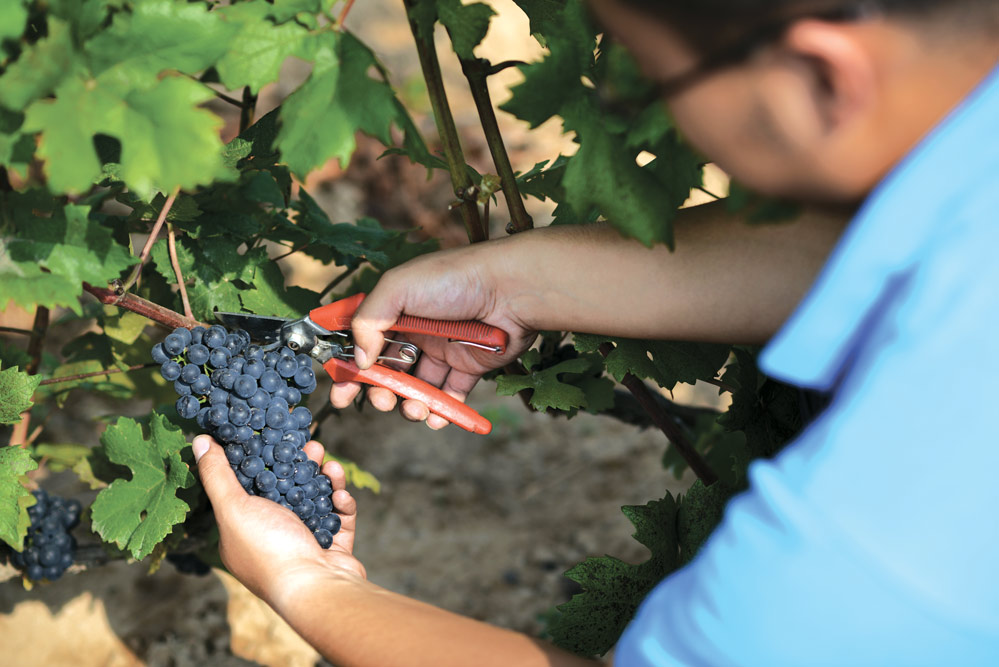China's Thirst for Wine Sees Growth in Producers and Sommeliers
Jan 26, 2016

Mainland China’s fast-growing middle class has seen more luxury consumer goods flowing East. Perhaps the most noticeable of these is wine. The economy may be softening, but it has yet to put a cork on the love affair with first growths. And not content with buying old-world wines from respected terroir in Bordeaux, Chinese are buying the wineries.
Chinese wine producers are becoming more sophisticated, learning how to get the best out of their land to craft vintages that rival their more established counterparts. Chinese sommeliers, meanwhile, are finding themselves in demand for their knowledge of both Asian spirits and wines. Today, it is possible to get almost any label in Hong Kong or Shanghai – and many buyers choose to enjoy their investment rather than cellar it alongside minks and diamonds.
“In mainland China, domestically produced wine constitutes more than half of the country’s total wine consumption,” says Debra Meiburg, Master of Wine. Meiburg, who has lived in Hong Kong for 25 years, is an author, speaker and expert on wine education in the region. “Red wine from France still dominates imports, but the market has seen significant diversification over the past couple of years, due to the maturation of Chinese consumers and the government’s austerity measures.
“The Hong Kong market has matured over the past seven years since the abolition of taxes by the Hong Kong government. Today, you can find every major wine region well represented in Hong Kong, as well as smaller and lesser-known ones carving out niches, like Georgia or Greece,” she says.
“The thousands of locals flocking to the annual Hong Kong International Wine and Spirits Fair and Wine and Dine Festival are testament to the city’s flourishing wine culture. Macau’s Portuguese heritage means Portuguese wine has been an inherent part of the territory’s culture for many years. But then add the significant mainland Chinese tourist influx for the city’s gaming and entertainment facilities and you see the thirst for French wine reflected. While France leads the Taiwan market, Italy and Spain are its latest rising stars.”
Meiburg says the quality of Chinese wine has improved significantly in the past five years. “First, there is an organic growth in quality that comes from accumulated experience and vintages, enabling winemakers to refine their winemaking and grape-growing techniques. Also, investment by French and other European-based wineries and international beverage groups has seen quality become more important.
“Plus, we cannot underestimate the maturation of the market, with the tastes of China’s increasingly sophisticated consumers becoming more attuned to quality and expecting international standards. One of China’s top-quality and biggest producers, Grace Vineyard, has seen significant success both across China and even internationally. In 2015, Grace produced a sparkling wine series, the Angelina. This is demonstrative of producers who are serious about the long-term future of their products on the international wine stage.”
Founded in 1997, Grace Vineyard produces mainly red wine with grapes from 60 hectares of vineyards in Shanxi and Ningxia, where the soil is mostly sand, clay and loam. Judy Chan took over the reins from her father, Chan Chun-keung, in 2002 and the brand was launched in 2003. She is currently producing wine made mainly from Cabernet Sauvignon, Cabernet Franc and Merlot grapes for reds and Chardonnay for whites. Some of her reds are aged in French oak barrels. Her products have consistently sold out since 2008 and are distributed locally at her vineyards’ cellar doors, in first-tier cities across greater China, in five-star hotels and select restaurants. She also exports to key Asian destinations such as Japan and Singapore.
Chan aims to maintain production at 125,000 cases annually to control the quality. “My father started Grace because he thought the business had good potential in China and felt that it’s romantic to have a vineyard,” she says with a smile. “He had a good friend who was a French professor, and they worked together to find the right land in China and design the wineries. Our brand image is more important than our size. We are the first family-owned winery in China and our products have developed a proven track record. The average income in China is increasing and people have a higher quality of life. Chinese consumers are becoming pickier since they have more choices now. And it’s great for producers. We hope to inspire people to live better.”

Meanwhile, in the old-world wine-growing regions of Bordeaux and the Rhône Valley, another woman is making her mark. In 2006, oenologist Caroline Frey’s family purchased third-growth Bordeaux winery Château La Lagune and Paul Jaboulet Aîné in Tain-l’Hermitage. In a mere decade, Frey and her team have managed to shift the spotlight back to the two venerable brands, and she personally oversees every harvest to ensure that grapes are picked at their best.
“Since 2010, we have seen a trend of wealthy Chinese purchasing Bordeaux vineyards,” says Frey. “Chinese buyers would maintain the existing wine team and produce wines for their own market. The types of estates are generally petit chateaux, starting from 20 hectares. The Chinese have long appreciated French luxury products, and possessing French chateaux bring not only status, but reveal the Chinese have increasing knowledge and confidence in wine. Following a number of Chinese investments in mid-range chateaux, 2012 marked the first purchase of a Bordeaux Grand Cru, Château Bellefont-Belcier on the right bank, purchased by the Wang family for €35 million.”
Frey also notes that the wine auction market in Hong Kong has become more prominent in recent years, with many buyers from mainland China. “Plus, the last decade has seen a significant rise of young Chinese travelling overseas to places like France, the UK and Canada to study for their sommelier certifications or international wine business courses. I believe the interest in wine is driven by a curiosity of Western lifestyles, yet it also relates to traditional Chinese culture and a love for gastronomy.”
One such young Chinese sommelier is Lu Yang, corporate wine director at Shangri-La Hotels and Resorts. Born in Xinjiang and raised in Shanghai, Lu studied physics at the University of Toronto before discovering his love for wine on a trip to the Niagara region of southern Ontario. He set his sights on becoming a top sommelier and now leads the hotel group’s international team.
Lu says the trends are clear. “Shanghai is about three years ahead of Beijing in terms of wine tastes,” he says. “Beijing’s big spenders are stuck on status and operate within a political environment. Shanghai drinkers are more open; they are professionals who have expertise and know what they like. After the 2008 Olympics and 2010 Expo, there is more choice in China than ever before. Compared to Shanghai, Hong Kong wine consumers are less experimental. And whisky is bigger than wine in Taiwan.
“[With more choice] we are now seeing 65 to 75 percent of domestically produced wine products consumed, as opposed to 80 percent only five years ago [even though] Chinese wine is improving, and owners are very ambitious to make good wine… Since the restrictions and downturn of 2012, the wine scene has been developing in a healthy, sustainable direction. While wine can be a sign of status…I believe that it is a drink for everyone.”




























